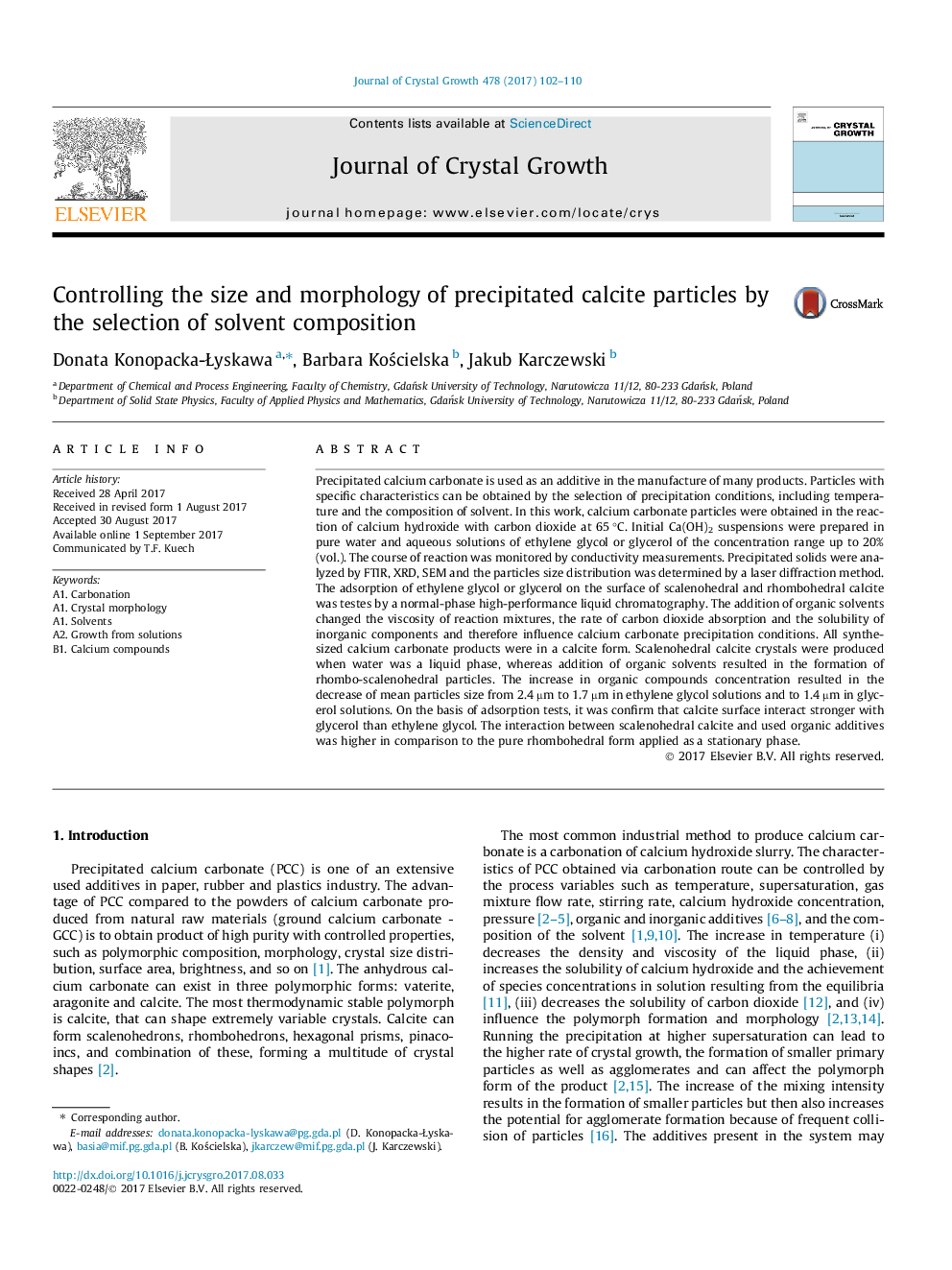| کد مقاله | کد نشریه | سال انتشار | مقاله انگلیسی | نسخه تمام متن |
|---|---|---|---|---|
| 5489079 | 1524351 | 2017 | 9 صفحه PDF | دانلود رایگان |
- Precipitated calcium carbonate was produced via carbonation route from calcium hydroxide.
- Aqueous solutions of glycerol and ethylene glycol were used as liquid phases.
- Characteristics of obtained particles depend on physical properties of used solvents.
Precipitated calcium carbonate is used as an additive in the manufacture of many products. Particles with specific characteristics can be obtained by the selection of precipitation conditions, including temperature and the composition of solvent. In this work, calcium carbonate particles were obtained in the reaction of calcium hydroxide with carbon dioxide at 65 °C. Initial Ca(OH)2 suspensions were prepared in pure water and aqueous solutions of ethylene glycol or glycerol of the concentration range up to 20% (vol.). The course of reaction was monitored by conductivity measurements. Precipitated solids were analyzed by FTIR, XRD, SEM and the particles size distribution was determined by a laser diffraction method. The adsorption of ethylene glycol or glycerol on the surface of scalenohedral and rhombohedral calcite was testes by a normal-phase high-performance liquid chromatography. The addition of organic solvents changed the viscosity of reaction mixtures, the rate of carbon dioxide absorption and the solubility of inorganic components and therefore influence calcium carbonate precipitation conditions. All synthesized calcium carbonate products were in a calcite form. Scalenohedral calcite crystals were produced when water was a liquid phase, whereas addition of organic solvents resulted in the formation of rhombo-scalenohedral particles. The increase in organic compounds concentration resulted in the decrease of mean particles size from 2.4 µm to 1.7 µm in ethylene glycol solutions and to 1.4 µm in glycerol solutions. On the basis of adsorption tests, it was confirm that calcite surface interact stronger with glycerol than ethylene glycol. The interaction between scalenohedral calcite and used organic additives was higher in comparison to the pure rhombohedral form applied as a stationary phase.
Journal: Journal of Crystal Growth - Volume 478, 15 November 2017, Pages 102-110
